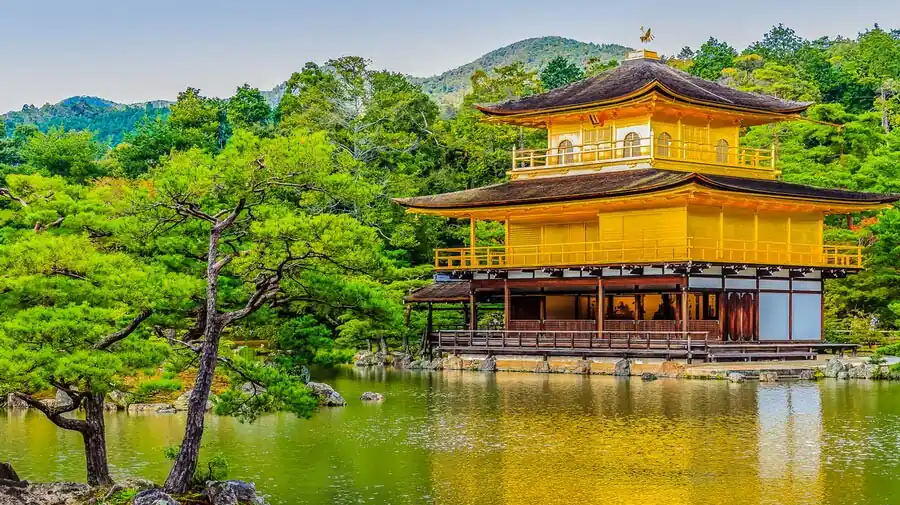A Glimpse into Traditional Japanese Architecture
Japan’s traditional architecture is a testament to the country’s deep appreciation for simplicity, harmony with nature, and craftsmanship. Characterized by wooden structures, sliding doors, and carefully planned spaces, traditional Japanese architecture offers a glimpse into a world where design is not just about aesthetics, but also about balance, function, and cultural expression. This post explores the key elements, historical significance, and cultural values embedded in traditional Japanese architecture.
1. The Principles of Japanese Architectural Design
Traditional Japanese architecture is deeply rooted in the principles of Zen Buddhism and Shintoism, both of which emphasize a close connection to nature and a focus on simplicity and tranquility.
- Simplicity and Minimalism: One of the defining characteristics of Japanese architecture is its simplicity. This is reflected in the use of natural materials, clean lines, and uncluttered spaces. The minimalist approach is not just an aesthetic choice but also a reflection of the Zen Buddhist principle of kanso—a focus on essential beauty and the elimination of unnecessary elements.
- Harmony with Nature: Traditional Japanese architecture seeks to create a seamless integration between indoor and outdoor spaces. This is achieved through the use of natural materials such as wood, paper, and stone, as well as design features like sliding doors (shoji) and verandas (engawa) that open up to gardens or courtyards. The architecture encourages a constant interaction with the natural environment, promoting a sense of peace and balance.
2. Key Elements of Traditional Japanese Architecture

Several architectural elements are unique to Japanese design, each contributing to the overall harmony and functionality of the structure.
- Tatami Mats: Tatami mats are traditional straw mats used as flooring in Japanese homes. Their standard size dictates the proportions of the room, and the mats themselves add to the sense of simplicity and order. Tatami rooms, or washitsu, are typically used for sleeping, tea ceremonies, and other traditional practices.
- Shoji Screens: Shoji are sliding doors or room dividers made from translucent paper mounted on a wooden frame. These screens allow natural light to filter into the room while maintaining privacy, creating a soft, serene atmosphere. Shoji screens also contribute to the flexible nature of Japanese interiors, where spaces can be easily reconfigured.
- Engawa Verandas: The engawa is a narrow wooden veranda that runs along the outside of a Japanese house, acting as a transitional space between the interior and the garden. It serves both functional and aesthetic purposes, providing a place to relax and enjoy the changing seasons while enhancing the connection between the home and nature.
3. The Role of Wooden Structures in Japanese Architecture
Wood is the primary material used in traditional Japanese architecture, valued for its natural beauty, flexibility, and resilience.
- Post and Beam Construction: Traditional Japanese buildings, whether homes, temples, or shrines, are constructed using a post and beam system. This technique involves using wooden columns to support a horizontal beam, creating a sturdy framework that can withstand earthquakes—a common natural disaster in Japan. The use of interlocking joints without nails allows the wood to expand and contract with changes in humidity, adding to the longevity of the structure.
- Temple and Shrine Architecture: Japanese temples and shrines are some of the most iconic examples of traditional architecture. Temples, often associated with Buddhism, feature large, sweeping roofs, intricate wooden carvings, and spacious interiors designed for meditation and worship. Shinto shrines, on the other hand, are typically simpler in design, with a focus on natural materials and a deep connection to the surrounding environment. Both structures reflect the spiritual significance of nature in Japanese culture.
4. The Cultural Significance of Traditional Japanese Homes
Japanese homes, known as minka, are more than just living spaces—they are designed to reflect the cultural values and lifestyle of their inhabitants.
- Multi-functional Spaces: Traditional Japanese homes are known for their flexible and multi-functional spaces. Rooms are often separated by sliding screens, allowing them to be reconfigured for different purposes throughout the day. This adaptability is a reflection of the Japanese value of efficiency and the importance of making the most of limited space.
- Seasonal Adaptability: Japanese homes are designed to adapt to the changing seasons. In the summer, the openness of the design allows for ventilation and a connection with the outdoors, while in the winter, the use of futon bedding and kotatsu (heated tables) helps to keep the space warm and cozy. This adaptability is essential in a country with distinct seasonal variations.
5. The Legacy and Influence of Traditional Japanese Architecture
The influence of traditional Japanese architecture extends beyond Japan, inspiring architects and designers around the world.
- Modern Interpretations: In contemporary architecture, many designers draw inspiration from traditional Japanese elements such as the use of natural materials, open floor plans, and the integration of indoor and outdoor spaces. This fusion of old and new creates buildings that are both functional and aesthetically pleasing, with a deep respect for tradition.
- Global Impact: Japanese architecture has had a significant impact on modern design movements, particularly in the fields of minimalism and sustainable architecture. The emphasis on simplicity, natural light, and harmony with nature resonates with global trends towards more sustainable and mindful living environments.
Conclusion
Traditional Japanese architecture offers a unique perspective on how design can reflect cultural values and a deep connection to the natural world. From the carefully crafted wooden structures to the harmonious integration of indoor and outdoor spaces, Japanese architecture is a celebration of simplicity, balance, and craftsmanship. Whether you’re an architect, designer, or simply someone who appreciates beautiful spaces, exploring the world of traditional Japanese architecture provides valuable insights into the art of creating environments that nurture the soul and respect the natural world.



